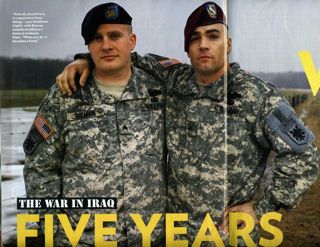Unruly Bodies
I reference the images below in “Unruly Bodies: The Rhetorical Domestication of Twenty-First Century Veterans of War.” Quarterly Journal of Speech 96 (1) (February, 2010): 46-68.
Abstract
Veterans of wars in Afghanistan and Iraq with visually identifiable injuries possess “unruly” bodies that render the story of war in efficient, emotional terms. The injured veteran’s explicit connection of war with injury motivates state and mainstream news discourse that domesticates veterans’ bodies, managing representations of injured veterans through three dominant strategies. First, dominant discourses invoke veterans’ bodies as metonymy of the nation-state at war–their well-being operates as a metonym for both the nation’s health and for the condition of the war. Second, veterans are domesticated by strategic placement in contexts that regulate their range of movement, especially amputees, who are often framed as having already overcome any limitations imposed by their war injuries. Third, dominant visual discourse domesticates veterans’ bodies by ascribing a strategic telos to them, shifting the meaning of the injuries away from their origins in state policy and toward wholeness and “normalcy.” Representations of whole-bodied and injured veterans tame the harshness of war and erode the argumentative grounds for questioning it.
FIGURE 1: Specialist Marissa Strock in Newsweek
FIGURE 2: White House jog. From the White House archive
FIGURE 3: Parody by TheHollywoodLiberal
FIGURE 4: Tommy Rieman and Rob McAllister in People, March 31, 2008, p. 80-81.
FIGURE 5: President Bush blows an air horn to start the annual White House to Lighthouse bike race. Originally accessed at Whitehouse.gov




